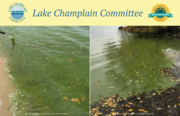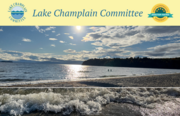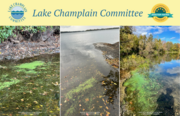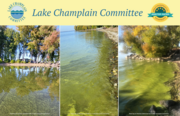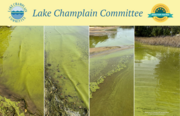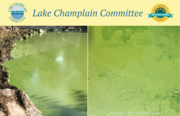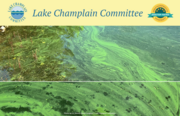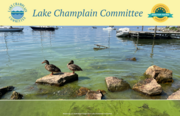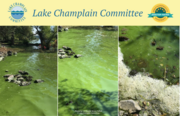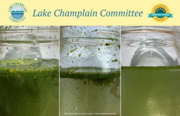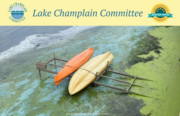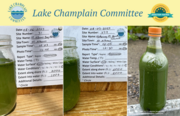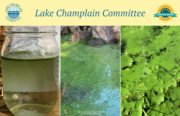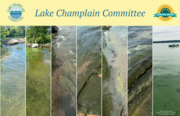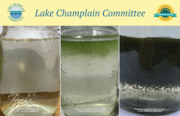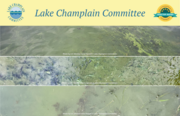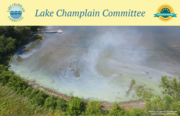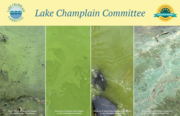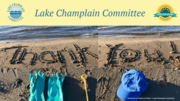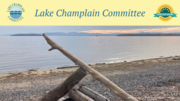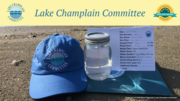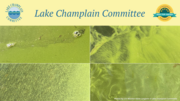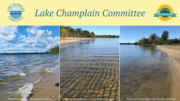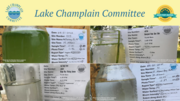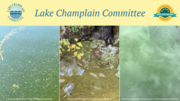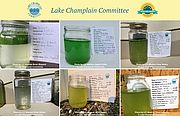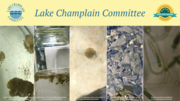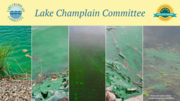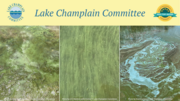In this email you’ll find details of Week 18 monitoring along with information to help you recognize and report on cyanobacteria. Click on the links for scenes of fall blooms on Lake Champlain’s Inland Sea and Missisquoi Bay; a low alert bloom at Burlington’s Coast Guard boat access on Lake Champlain’s Main Lake Central; pictures of the varied conditions witnessed during Week 18 from clear water to high alert blooms; photos of Prouty Bay Lake Memphremagog post-bloom; shots of a high alert at Philipsburg Public Park QC on Lake Champlain’s Missisquoi Bay; pristine scenes at Blanchard Beach and Texaco Beach in Burlington VT on Lake Champlain’s Main Lake Central; autumn observations at St. Anne’s Shrine in Isle La Motte VT, and Burlington VT sites at Blanchard Beach, Oakledge Rocky Shore, and North Beach; and a snapshot of Missisquoi Bay monitor Nancy Lambert in action at her QC site. Read...
News from Selected Category
Brrr! It’s getting chilly in and around our waterways as fall fully takes hold. However, cyanobacteria blooms are still happening at various Lake Champlain and inland lake locations. Please use the resources in this email to learn how to recognize, avoid, and report cyanobacteria. Read on for details of Week 17 monitoring results along with resources to guide your reporting. Click on the links for a picture of LCC monitor Alfred Cumming taking a cold water sample, scenes of low alert blooms at Lake Memphremagog’s Derby Bay and Newport Marina and at Lake Champlain sites on Missisquoi Bay and the Inland Sea, and pictures of Lake Champlain clear water at St. Anne’s Shrine, Stoney Point, and DAR State Park.
While reports continue to dwindle as more monitors leave shoreline areas, we continue to see blooms. Please use the resources in this email to learn how to recognize, avoid, and report cyanobacteria. Click on the links for how to join our monitoring team in 2024 and to see pictures clear water conditions at Philipsburg QC and Burlington VT, an autumn alert at Hills Point Charlotte VT, fall leaves amongst cyanobacteria, and blooms at Graveyard Point North Hero VT on Lake Champlain and Prouty Bay on Lake Memphremagog. Read...
Fall is a time of year when we have far fewer monitors reporting but blooms can still occur. This email includes details of Week 15 monitoring results along with resources to help you recognize cyanobacteria and stay informed about water quality. You’ll also find photos of iron bacteria, bloom close-ups from Lake Champlain and Lake Memphremagog, and cyanobacteria sightings at Philipsburg QC, Isle La Motte VT, Alburgh VT, North Hero VT, South Burlington VT, Peacham Pond, and Lake Memphremagog. Read...
Fall is a time of year when we have far fewer monitors reporting but blooms are still prevalent. Forty-three percent of the Lake Champlain reports and 8 percent of the VT inland lake reports we received for Week 14 were of blooms. Please use the resources and photos in this email to help you learn how to recognize cyanobacteria and stay informed about water quality. Read...
Week 13 was a challenging one as blooms took off in new areas and persisted in others and the online reporting system overseen by the VT Dept. of Health (VDH) was not accessible for several days while IT staff worked to resolve issues. This meant monitors had to try to submit reports multiple times and LCC staff had a backlog of reports to sort through and vet once the tracker came back online. Over one third of the 126 reports we ultimately received during the week were of blooms which further reinforces the need to check water conditions carefully even during the fall.
We had fewer reports during week 12 in part due to a lower incidence of blooms but also because municipal and state parks are closing and seasonal staff and volunteers are leaving the region so there are fewer monitors reporting as summer ends. However, fall blooms are not uncommon so the monitoring program will continue through October with reduced site coverage. Lower temperatures will cool the water surface and generally reduce the incidence of blooms in deeper waters like Lake Champlain’s Main Lake, but shallow water areas like Missisquoi and St. Albans Bay and Lake Carmi will be less affected and blooms may continue. Read...
It was another challenging week for water quality with nearly half of the 188 reports received from Lake Champlain sites chronicling blooms during week 11. Hot temperatures over the Labor Day weekend spurred cyanobacteria growth and blooms were reported in every Lake Champlain lake segment except for the South Lake. Read...
During week 10 of cyanobacteria monitoring over a third of the 148 Lake Champlain reports received were of blooms. Blooms were dominant again in St. Albans Bay and Missisquoi Bay but also colored waters and shoreline areas in parts of the Inland Sea, Main Lake North, and Malletts Bay. Main Lake Central, Main Lake South, and the South Lake were bloom-free. Read...
Blooms continued to dominate Lake Champlain monitoring reports from St. Albans Bay and Malletts Bay during week 9 and were also recorded in Missisquoi Bay, the Inland Sea, Main Lake North, and Main Lake South. Main Lake Central and the South Lake were again bloom-free but we received very few reports from the latter lake segment. Read...
It was another week of bloom gloom at many northern Lake Champlain sites. The majority of reports from St. Albans Bay, Missisquoi Bay, the Inland Sea, St. Albans Bay, and Malletts Bay sites were of bloom conditions. Main Lake North also had a significant number of blooms while all site reports from Main Lake Central to the South Lake were bloom-free. Some monitors reported that they witnessed the worst conditions they had ever seen in a particular lake section. You’ll find specific details from Lake Champlain and VT Inland Lake sites in this report. Read...
Another challenging week for St. Albans Bay with blooms dominating the reports for that section of Lake Champlain yet again. Blooms were also witnessed in Missisquoi Bay, the Inland Sea, and Main Lake North. Other sections of the big lake were bloom-free for week 7 as were the VT Inland Lakes based on the reports we received. While it is characteristic of recent trends that we see blooms concentrated in St. Albans Bay and Missisquoi Bay this time of year, be mindful that they can happen anywhere. The heavy nutrient loading from the July 2023 flooding as well as temperature and weather patterns all influence conditions. This email is a compilation of week 7 (8/6 – 8/12/23) monitoring results but three days into week 8 we have already received over 50 bloom reports from Lake Champlain sites in Missisquoi Bay, St. Albans Bay, the Inland Sea, and Malletts Bay! In some cases monitors have noted blooms extending as far out into the waters as they can see. Witnessing a cyanobacteria bloom can take an emotional toll – blooms threaten water quality, public health, recreation, the economy, and quality of life. We’re bearing witness to painful changes in our waterways. Monitoring is not the end result of the Lake Champlain Committee’s work, it’s foundational for our nutrient reduction advocacy. Read...
Blooms hit St. Albans Bay hard again with cyanobacteria persisting at some locations all week long or showing up off and on during the sixth week of monitoring. August and September are often prime times for bloom conditions so please use the resources and links in this email to learn how to recognize and report cyanobacteria. Read...
Blooms took off during week 5 in many areas of Lake Champlain’s St. Albans Bay closing the town beach and impeding recreational use for most of the week. Blooms also showed up at several Burlington sites in Main Lake Central but didn’t persist for as long. August is historically when many locations are more susceptible to blooms and the recent heavy nutrient loading from the July 2023 floods may exacerbate this situation. Read...
There were fewer blooms during week four than during the first two weeks of monitoring but we are not in the heart of bloom season yet. We also likely saw a reprieve in some areas due to the turbidity and dilution factors from the flooding. However, we are bracing ourselves for the after-effects of all the additional nutrient loading which will help feed future blooms. Read...
Far fewer bloom reports were received during Week 3 of the cyanobacteria monitoring season. This is largely attributed to the volatile weather patterns and the increased turbidity from the flooding that affected much of Lake Champlain as well as Vermont inland waterways. The heavy sediment load carried by a high volume of water had a combined effect of limiting light necessary for bloom growth and diluting existing cyanobacteria. However, flooded tributaries also sent high levels of nutrients to Lake Champlain and other waterways. Early estimations are that some tributaries delivered more phosphorus to Lake Champlain during the July 2023 floods than during all of 2022! This will likely fuel blooms later in the season. Read...
Week 2 of cyanobacteria monitoring began with another spate of bloom reports and ended with catastrophic flooding which has devastated communities in the Lake Champlain watershed and throughout the state of Vermont. We hope you are safe, healthy, and dry—and that you’ve made it through the storms (which aren’t over) without damage. While Lake Champlain is below flood stage, it is receiving a heavy load of debris, nutrients, sediment, and a stormwater swill of oil and other pollutants from swollen tributaries, wastewater overflows, and failed septic systems. Read...
Cyanobacteria Monitoring began the week of June 25 and will run through early fall. Subscribers to our emails will receive weekly updates about conditions monitors are finding on Lake Champlain and at many inland lakes. This week’s report covers conditions from Sunday, June 25 through Saturday, July 1, 2023. If you’d like to learn more about cyanobacteria or join our monitoring team please sign up here. We will hold training sessions on Wednesday July 12 from 9:00 a.m. until Noon and 5:30 to 8:30 p.m. Read...
The 2022 cyanobacteria monitoring season has come to a close for LCC monitors and partners. Monitors collectively filed over 2,500 reports during this year’s 20-week season. In the links and photographs below you’ll find our last weekly report compilation for 2022; a link to sign-up to monitor in 2023; clear water scenes from Alburgh Dunes State Park, Stoney Point, and the Burlington shoreline; water samples from Burlington beaches and DAR State Park; stick season images; bike ride beauty; and which monitor filed 143 reports this season. Read...
Site coverage is scant this time of year but all 47 reports from Lake Champlain received during week 19 were of good conditions. For inland lakes, Lake Carmi had a low alert bloom and Joe’s Pond had a high alert. The latter covered a wide swath of shoreline but was short-lived. Blooms can still happen late in the season so please continue to report if you’re still in the area. Read...
Only a scattering of monitoring reports are still coming in as we move into stick season but all that do provide important data on water conditions. Lake Champlain was bloom-free for the second fall week in a row. Lake Champlain was bloom-free again for the fourth week in a row. The lone sighting of cyanobacteria came from Lake Iroquois but we only had reports from four inland lakes. Read...
Good water conditions dominated monitoring reports for the third full week of fall but there are far fewer monitors reporting this time of year on Lake Champlain and inland lakes. This week’s photos don’t show any cyanobacteria but scroll down to see what monitors observed during week 17 including... Read...
Good water conditions dominated monitoring reports for the second week in a row since we moved into the fall season but cyanobacteria blooms continued to show their colors in areas of Lake Champlain and several inland lakes. Read...
Good water conditions dominated monitoring reports during week 15 but blooms showed up in a few Lake Champlain locations as well as several inland lakes. Scroll down to see clear water at Alburgh Dunes State Park, and Graveyard Point on Lake Champlain; blooms at Lake Carmi, Lake Memphremagog, Shelburne Pond, Burlington beaches, and St. Albans Bay; and learn how to differentiate cyanobacteria from duckweed. Read...
Week 14 of monitoring brought cooler weather, fewer sightings of cyanobacteria, but also far fewer monitors to report them. High alert blooms continued in parts of St. Albans Bay, Lake Carmi, and Lake Morey which have all had persistent blooms during the last weeks or months. Read...
While the weather cooled during Week 13 of monitoring, blooms continued in several lakes or bays where they were present previously and showed up in some new locations. On Lake Champlain, high alert conditions were restricted to nutrient-rich St. Albans Bay but there were low alerts in the Inland Sea, Malletts Bay, Main Lake North, and Main Lake South. Blooms also persisted in Lake Carmi, Lake Morey, and Lake Memphremagog. Read...
Blooms continued into Week 12 of the monitoring season. You can see visuals of some of them from Lake Memphremagog, Lake Morey, Tinmouth Pond, Shelburne Pond and Lake Champlain’s Arnold Bay and Valcour Island, and Lake Champlain’s Keeler Bay. You’ll also find photos illustrating blue-green blues and the recreational impact of cyanobacteria. Read...
Several monitors reported odd gelatinous globules in the water at several sites in Lake Champlain’s Inland Sea during week 11 of monitoring. Happily they took water samples and photographs and shared the details with us and our partner Dr. Ana Morales-Williams at the University of Vermont’s Rubenstein Ecosystem Science Laboratory. The samples turned out to be Calothrix sp. – a benthic filamentous cyanobacteria. Read...
Happy end of August! As we move towards September, please remember that blooms can still happen as summer wanes which is why we are only about half way through the monitoring season. Blooms have been witnessed through November in our region during past years and the next few months can be very active periods for blooms. Read...
We’ve had a lot of additional subscribers to our weekly cyanobacteria emails so here’s a link to all the weekly reports from the 2022 season in case you’ve missed any of them. They’re worth checking out for the compilation of reporting results, visuals of blooms, and information to help you differentiate cyanobacteria from other lake phenomena. Read...

